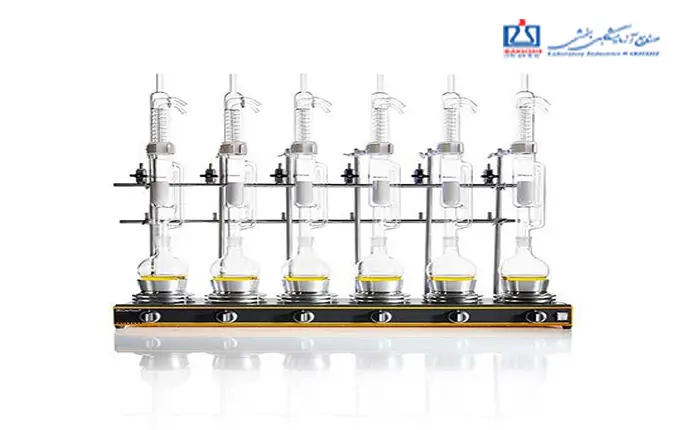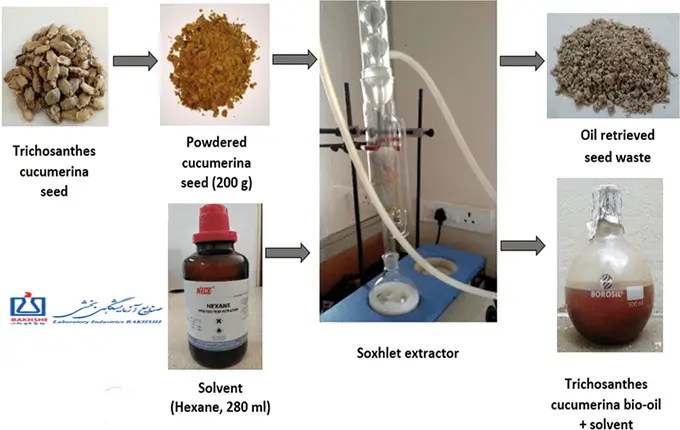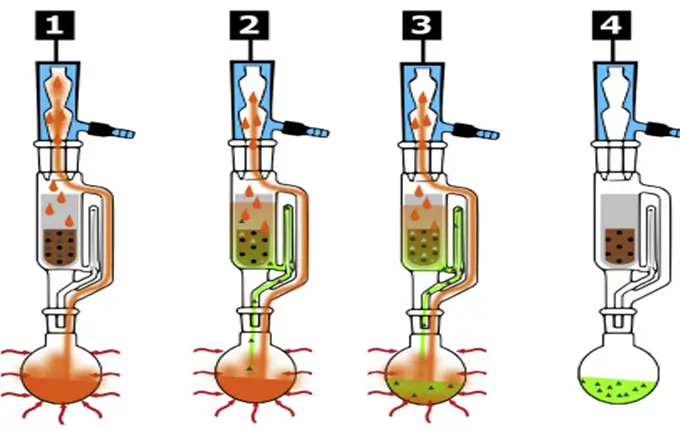
What is a Soxhlet Extractor?
In the laboratory environment, some equipment is initially designed for specific and extremely limited purposes, but over time, researchers have learned to use them in a way that can solve a set of different needs with their help. In the meantime, some of these tools are more difficult to make and have a more complex design, which despite their widespread use and routine presence in some laboratory environments, not necessarily every manufacturer can be their supplier. One of these products is the Soxhlet extractor, which we are trying to introduce you to in this section.

The Definition
The name of this device is taken from the name of a German chemist and biologist named Franz von Soxhlet, who succeeded in inventing it in the late 1870s. At that time, in Germany, the use of dry dairy products such as curd and cheese were very popular due to their long shelf life, but many of these materials could not withstand the fat removal process due to the characteristics of their raw materials, unless they were first prepared for their production. Low-fat milk was used. This researcher found a way to extract fats (lipids) from a solid substance, and the said process was known as the Soxhlet extraction process.
However, in modern times, the mentioned device works with a wide range of organic and chemical substances, and it has been found that although its operation method seems simple and trivial, it can be used for various tasks. . As long as the desired compound has a limited solubility in a solvent and a certain impurity is insoluble in that solvent, this process can be used to extract certain substances from solid compounds.
We’ll go through some of its main uses together.

Where can you use this device?
As we said, this extraction process is considered a relatively simple method in the laboratory environment, but in modern times it can be used for different tasks. Extraction and essential oil extraction is perhaps the most obvious use outside of fat extraction. Apart from that, in some cases, the device that performs it can be used to test some materials, while a wide range of polar solvents (such as dichloromethane or DCM) have a very good relationship with it. The minimum time required for the regular extraction of substances from a sample reaches 8 hours, and the sample can be organic or chemical depending on the test conditions.
Some of the most important uses of this device are:
• Fat extraction from solid animal matter
• Oil extraction from leather
• Fat extraction in sewage and sludge
• Extraction of softener from plastic
• Extracting the main semi-volatile compounds in products such as pesticides and insecticides
• Extraction of rosin from paper
• Extraction of effective substances of medicinal plants
• Extracting essential oils from plants
• Test of organic compounds of detergents
• Determining the percentage of fat in food, fodder, legumes, and all kinds of seeds

How does it work?
When using this device, you must first make sure that the process you are considering has been tried before and has been successful. Designing new experiments with this product is not recommended without the supervision of an experienced and skilled researcher, even if the process structure is simple. However, the general steps will usually be the same and include the following:
1. Pack the sample material on filter paper. The holes in the paper should be 1 mm in diameter. For solid, powder, or paste samples, at least 200 grams of the sample should be crushed or malted and passed through a 1 mm sieve. The same process should be repeated without passing through the filter for ingredients such as meat. Be careful, in samples with a possible fat of more than 200 grams, you must first perform an initial extraction.
2. Place the samples in the cups. Each cup can hold up to 80 ml.
3. Fill each cup with the desired solvent (ethanol, distilled water, etc.) and then mount them on the hot plate.
4. Open the faucet. The condenser water inlet should be 1 to 2 liters per minute.
5. Turn on the device and configure it. Usually, the temperature should be 20 degrees above the boiling point of the solvent, but the rest depends on your experiment.
6. By moving the spherical clamps, the baskets inside the cup are moved. Pay attention that to immerse the sample in the solvent for a quarter of the operation time, the basket must be placed inside the cup. After this time, the baskets are raised with the help of a clamp so that the sample is washed by the evaporated solvent.
7. Let the device work until a quarter of the time before the end of the set time.
8. At this time, close the water taps so that the evaporated solvent does not return to the cup and the obtained composition is as pure as possible.
9. After the time is up, turn off the device and let the hot plate cool down. It is recommended to wait until the remaining solvent in the cup evaporates.

Conclusion
In this article, we tried to introduce you to the Soxhlet device, its applications, and its operation process. We hope that this information will be useful for researchers and those who plan to use these tools and will be helpful at the beginning of their way to work with this product. In Bakhsi Laboratory Industries, we offer this product with the highest quality and the use of the highest quality raw materials and the most accurate possible design to those dear ones who intend to work with it. Our history and goodwill in producing this product are the cornerstones of our performance, and by relying on it, we have provided you with first-class laboratory products at affordable prices.


